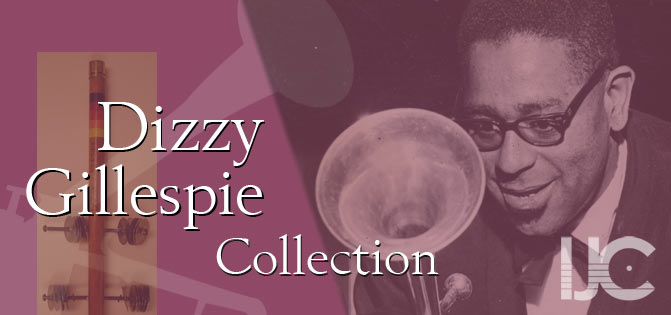Biography
John Birks “Dizzy” Gillespie was born on October 21, 1917 in Cheraw, South Carolina. Dizzy was the youngest of nine children. He started playing the piano at the age of 4, trombone at the age of 12, and the trumpet at 14. Although his father was a band leader and pianist, Dizzy was mostly self-taught after his father's death at the age of 10.
After high school, Gillespie received two scholarships, one in music and one in sports, to Laurinburg Institute in North Carolina. After a short time, he left Laurinburg to pursue music. He joined the Frankie Fairfax Band in Philadelphia, which is when he picked up his stage name, “Dizzy”. Following the Frankie Fairfax Band, Dizzy joined the orchestras of Teddy Hill, Cab Calloway, Ella Fitzgerald, and Earl Hines.
Dizzy Gillespie and Charlie Parker, another famous jazz musician, have been attributed to the development of bebop and modern jazz. Dizzy appeared on a Lionel Hampton record, playing “Hot Mallets”, which has been considered one of the first instances of bebop. Later, in 1945, Dizzy formed a band that showcased the beginnings of the new genre. He would go on to play in bebop style for the rest of his career.
In 1960, he was inducted into the Jazz Hall of Fame. In 1979, Dizzy published his autobiography To Be or Not to Bop. In the 1980s he led the United Nations Orchestra. 1989 was a whirlwind year for Dizzy as he gave 300 performances in 27 countries. Dizzy died on January 1993 in Englewood, New Jersey.

